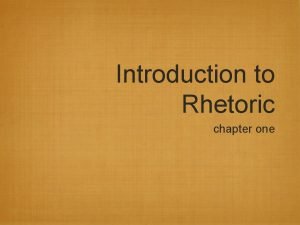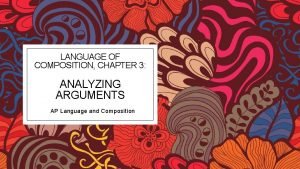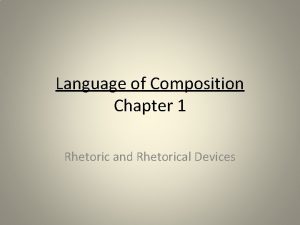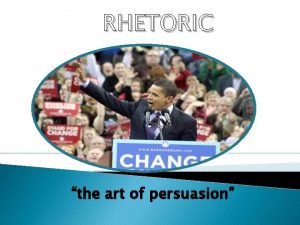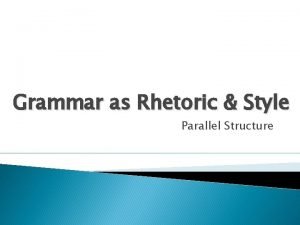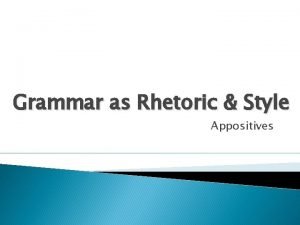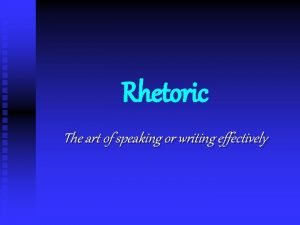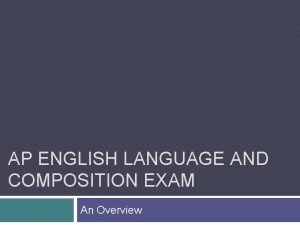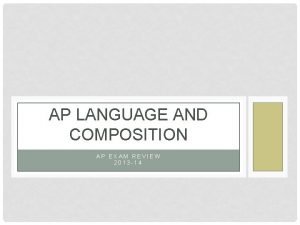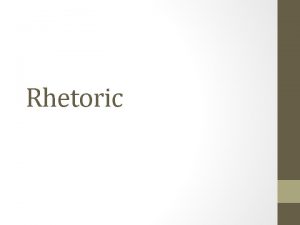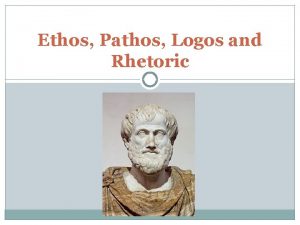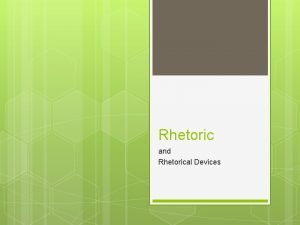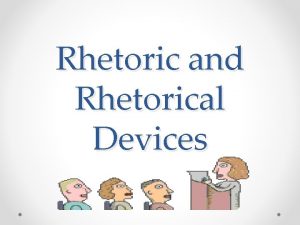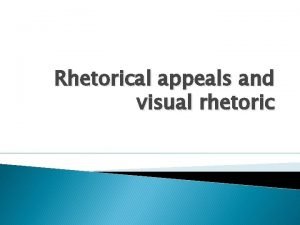Language of Composition Chapter 1 Rhetoric and Rhetorical








- Slides: 8

Language of Composition Chapter 1 Rhetoric and Rhetorical Devices

S. O. A. P. S. • S = SUBJECT • O = OCCASION • A = AUDIENCE • P = PURPOSE • S = SPEAKER

Never forget… • In analytical and detailed writing. . . SUMMARY IS DEATH! (In reference to the effectiveness of the text. )

Rhetorical Triangle • Also called the Aristotelian Triangle Speaker (or writer) Audience (or reader) Subject

Key Terms Rhetoric – the faculty of observing in any given case the available means of persuasion (purpose is for effective communication) Juxtaposition - an act or instance of placing close together or side by side, esp. for comparison or contrast. Strategic choices include: Ethos – character (to demonstrate as credible and trustworthy) Logos – reason (clear, logical, and rational ideas) Pathos – emotion (appeal to emotions and feelings)

Five Part Classic Model • The introduction (introduce reader to subject) • The narration (provide basic facts and background information) • The confirmation (provide specific details to support thesis) • The refutation (address the counterargument) • The conclusion (bring essay/speech to a satisfactory close)

Patterns of Development • Narration – story telling • Description – describe details • Process analysis – explanation of how and/or why something works or is done • Exemplification – provide examples or logical proof • Comparison and Contrast – discuss subtle differences and similarities to analyze information

• Classification and Division – sort ideas into categories to make connections • Definition – define an idea or topic to aid in understanding or to clarify • Cause and Effect – to analyze the cause that will lead to a specific effect or the effects that result from a specific cause. Clear logic is essential!
 How is rhetoric defined in this chapter?
How is rhetoric defined in this chapter? Language of composition chapter 3
Language of composition chapter 3 The language of composition chapter 1 notes
The language of composition chapter 1 notes Rhetoric: the art of persuasive writing and public speaking
Rhetoric: the art of persuasive writing and public speaking Rhetorical devices examples
Rhetorical devices examples Appositive definition in literature
Appositive definition in literature The art of speaking or writing effectively
The art of speaking or writing effectively Ap english language and composition exam format
Ap english language and composition exam format Ap english language and composition midterm exam
Ap english language and composition midterm exam
